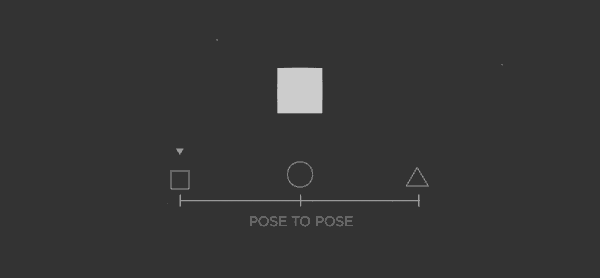Squash and Stretch – This gives the illusion of weight to a character when it moves. This means animating the dialogue and doing facial expressions. This may be used in extreme and minor cases.

Anticipation – This is a movement that prepares the audience for an action from the character, for example the character may duck down before jumping into the air

Staging – An action should be clearly communicated to the audience. The attitude, mood, reaction or idea of the character needs to relate to the story and continuity of the story line.

Straight ahead and pose to pose animation – Straight ahead animation begins at the first drawing and works drawing to drawing till the end of the scene. Pose to pose is planned out and charted with key drawings.

Follow through and overlapping action – When the main bdy of the character stops the other components of the body will continue to catch up the main mass of the character. An example is a piece of clothing a character is wearing may need to catch up once the character has stopped moving. Overlapping is used when the character changes direction, for example in this scenario the hair may go in front of the character.

Slow out and slow in – As action starts, we have more drawings near the starting pose, one or two in the middle, and more drawings near the next pose.When there are less drawings the action is faster and when there are more the action is slower.

Arcs – Most actions will follow an arc or circular path to give them a more natural looking movement.

Secondary Action – This is used to add more dimension to the character. A secondary action is one that follows the characters main action. This will either supplement or re-enforce the main action. For example a characters main action may be running but the secondary action will be it leaning forward to add emphasis on the main action.

Timing – he basics are: more drawings between poses slow and smooth the action. Fewer drawings make the action faster and crisper. A variety of slow and fast timing within a scene adds texture and interest to the movement.

Exaggeration – The primary example of this is a character may move more exaggerated so that it looks more crisp and natural. The same applies to not only movement but also facial expressions.

Solid drawing – The basic principles of drawing form, weight, volume solidity and the illusion of three dimension apply to animation as it does to academic drawing. The way you draw cartoons, you draw in the classical sense, using pencil sketches and drawings for reproduction of life. You transform these into color and movement giving the characters the illusion of three-and four-dimensional life.

Appeal – All characters in animation need to have appeal, characters can be appealing in different ways, they may be heroic, cute or even evil looking. Easy to read designs are apart of the appeal.

This is a playlist with a more in depth analysis of the 12 principles
